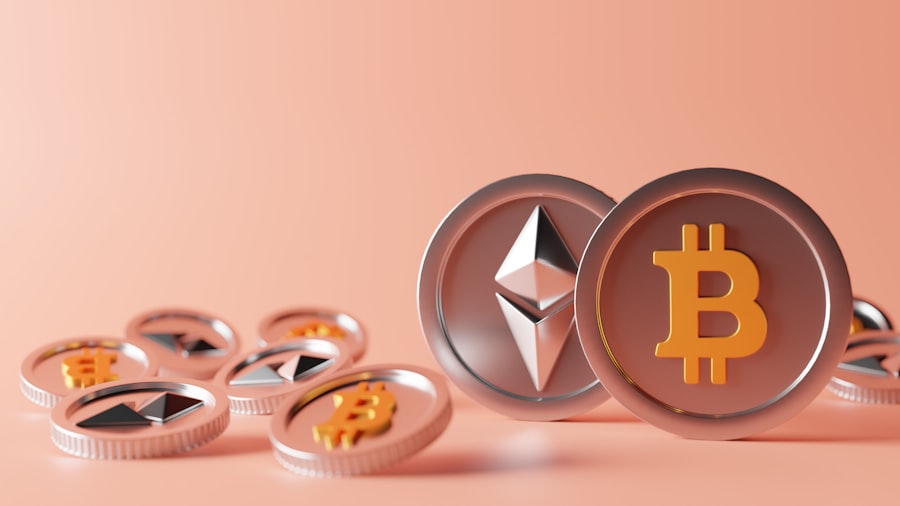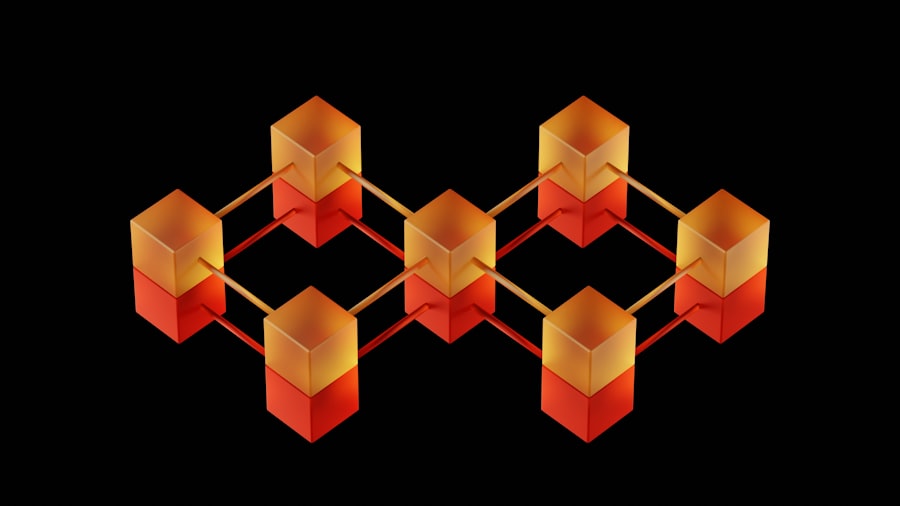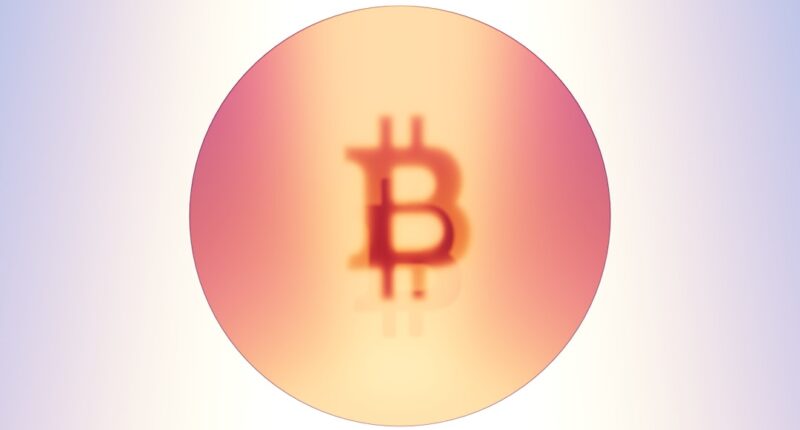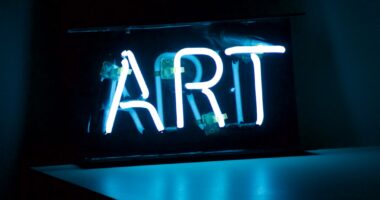NFTs, or non-fungible tokens, emerged in 2017 with the launch of CryptoKitties, a blockchain-based game enabling players to trade virtual cats using Ethereum. This event marked the beginning of a new era in digital ownership, allowing unique digital assets to be traded using blockchain technology. The concept gained popularity in the art world, as digital artists and creators recognized the potential to monetize their work in novel ways.
Consequently, NFT art sales surged, with some pieces selling for millions of dollars at auction. In 2021, the NFT market experienced a significant downturn, with sales and prices declining sharply after reaching peak levels earlier in the year. This decline was partly attributed to concerns over the environmental impact of NFTs, as the energy consumption required for minting and trading came under scrutiny.
Additionally, market skepticism and fatigue grew as the initial excitement surrounding NFTs began to diminish. Despite these challenges, NFTs remain a topic of interest and debate, with many industry experts predicting their continued significance in the digital economy. The journey of NFTs has been characterized by both rapid growth and subsequent decline.
While their future remains uncertain, their impact on the digital art world and the broader economy is undeniable. As the industry continues to evolve, it is crucial to examine the opportunities and challenges associated with working in the NFT space.
NFT Jobs: Opportunities and Challenges in the Industry
The Demand for Skilled Professionals
From NFT developers and engineers to marketing and sales professionals, there is a growing need for individuals with expertise in blockchain technology and digital art. Additionally, companies require legal and regulatory experts to navigate the complex landscape of digital ownership and intellectual property rights.
Challenges in the NFT Industry
Working in the NFT industry comes with its own set of challenges. The market’s volatility means that job security can be uncertain, as companies may struggle to maintain profitability during periods of low sales and declining interest in NFTs. Furthermore, the regulatory environment surrounding NFTs is still evolving, creating legal uncertainties for businesses operating in this space.
Adapting to Change and Embracing Opportunities
Despite these challenges, the NFT industry presents exciting opportunities for individuals looking to work at the intersection of art, technology, and finance. As the market continues to mature, new job roles and career paths will emerge, offering diverse opportunities for professionals with a range of skills and expertise. Individuals considering a career in the NFT industry must be prepared to adapt to rapid changes and navigate potential legal and financial risks.
NFT Artists: Success Stories and Struggles in the Digital Art World

The emergence of NFTs has provided a platform for digital artists to showcase and monetize their work in ways that were previously not possible. Many artists have found success in the NFT space, with some earning substantial sums from the sale of their digital creations. This has allowed artists to gain greater control over their work and reach a global audience of collectors and enthusiasts.
Additionally, NFTs have enabled artists to receive royalties on secondary sales of their work, providing a new source of ongoing income that was previously unavailable in the traditional art market. However, not all artists have found success in the NFT space. The market can be highly competitive, making it difficult for emerging artists to stand out among the crowd.
Additionally, concerns have been raised about the environmental impact of NFTs, leading some artists to reconsider their involvement in the market. Furthermore, the speculative nature of NFT sales means that artists may experience significant fluctuations in their income, making it challenging to rely on NFTs as a stable source of revenue. Despite these challenges, many artists remain optimistic about the potential of NFTs to revolutionize the art world.
By embracing new technologies and business models, artists can leverage NFTs to gain greater financial independence and creative freedom. As the market continues to evolve, it is likely that new opportunities will emerge for artists to thrive in the digital art world.
NFT News: Recent Developments and Trends in the NFT Market
| Date | Event | Impact |
|---|---|---|
| March 2021 | First NFT artwork sold for 69 million | Signaled the beginning of NFT craze |
| May 2021 | NFT market reached 2 billion in sales | Increased mainstream interest in NFTs |
| August 2021 | NFT gaming and collectibles gained popularity | Expanded NFT use cases beyond art |
| October 2021 | Integration of NFTs in music industry | Opened new revenue streams for musicians |
The NFT market has seen a number of recent developments that have shaped its trajectory and future prospects. One notable trend is the growing interest from established brands and celebrities in entering the NFT space. This has led to high-profile collaborations between artists and companies, as well as an increase in celebrity-led NFT projects.
Additionally, there has been a surge in interest from traditional art institutions and galleries in exploring the potential of NFTs as a new medium for showcasing and selling art. Another significant development is the increasing focus on sustainability within the NFT market. As concerns over the environmental impact of blockchain technology have grown, there has been a push for more eco-friendly alternatives for minting and trading NFTs.
This has led to the development of new platforms and protocols that aim to reduce the carbon footprint of NFTs, as well as initiatives to offset the environmental impact of blockchain transactions. Furthermore, there has been a shift towards greater transparency and accountability within the NFT market. This includes efforts to combat fraud and plagiarism, as well as initiatives to ensure fair compensation for artists and creators.
These developments reflect a growing recognition of the need for ethical standards and best practices within the NFT industry. As the NFT market continues to evolve, it is likely that these trends will shape its future direction and impact on the broader art and technology sectors.
The Truth About NFTs: Debunking Myths and Misconceptions
The rise of NFTs has been accompanied by a number of myths and misconceptions that have shaped public perceptions of this emerging market. One common misconception is that NFTs are purely speculative investments with no inherent value. In reality, NFTs represent unique digital assets that can have significant cultural and artistic value, as well as potential financial value.
Additionally, NFTs have enabled artists to gain greater control over their work and receive ongoing royalties from secondary sales, providing a new source of income that was previously unavailable in the traditional art market. Another myth surrounding NFTs is that they are inherently harmful to the environment due to their reliance on blockchain technology. While it is true that blockchain transactions can be energy-intensive, there are efforts underway to develop more sustainable alternatives for minting and trading NFTs.
This includes the use of eco-friendly blockchain protocols and initiatives to offset the carbon footprint of NFT transactions. Furthermore, there is a misconception that NFTs are only accessible to wealthy collectors and investors. In reality, there is a growing market for affordable NFTs that cater to a wide range of budgets, making it possible for individuals from diverse backgrounds to participate in this emerging market.
By debunking these myths and misconceptions, it becomes clear that NFTs have the potential to democratize access to art and creative expression while providing new opportunities for artists and creators.
The Future of NFTs: Predictions and Speculations

Integration into the Digital Economy
As blockchain technology continues to mature and become more widely adopted, it is likely that NFTs will become an integral part of the digital economy. Additionally, there is speculation that NFTs will play a role in reshaping traditional business models within the art world. This includes new opportunities for artists to monetize their work directly through tokenization, as well as changes to how art is exhibited and sold.
Benefits and Challenges
Furthermore, there is potential for NFTs to enable greater transparency and traceability within the art market, addressing longstanding issues related to provenance and authenticity. However, there are also concerns about potential challenges that may arise as NFTs become more mainstream. This includes issues related to copyright infringement, fraud, and regulatory compliance.
Establishing Ethical Standards
As such, it will be important for industry stakeholders to work together to establish ethical standards and best practices that promote trust and accountability within the NFT market. Overall, while there are uncertainties about how the future of NFTs will unfold, it is clear that they have already made a significant impact on the art world and are likely to continue shaping its evolution in the years to come.
NFT Regulation: The Need for Standards and Accountability in the Industry
As the popularity of NFTs continues to grow, there is an increasing need for regulation and standards within the industry. This includes efforts to address issues related to copyright infringement, fraud, and consumer protection. Additionally, there is a need for greater transparency and accountability in how NFT platforms operate, including measures to ensure fair compensation for artists and creators.
One key challenge is establishing clear guidelines for intellectual property rights within the NFT market. This includes defining how copyright laws apply to digital assets that are tokenized as NFTs, as well as addressing issues related to plagiarism and unauthorized use of copyrighted material. Furthermore, there is a need for mechanisms to verify the authenticity of digital assets that are tokenized as NFTs, ensuring that buyers can trust in the provenance of what they are purchasing.
Another area of concern is ensuring fair compensation for artists and creators within the NFT market. This includes establishing standards for royalty payments on secondary sales of NFTs, as well as measures to prevent exploitation and underpayment of artists. Additionally, there is a need for greater transparency in how revenue from NFT sales is distributed among stakeholders within the industry.
Overall, establishing clear regulations and standards within the NFT industry will be essential for promoting trust and accountability among buyers, sellers, and creators. By working together to address these challenges, industry stakeholders can help ensure that NFTs continue to thrive as a legitimate and ethical medium for buying, selling, and owning digital assets.
If you’re interested in the future of NFTs and their potential impact on the job market, you may want to check out this article on NFT Jobs. It explores the growing demand for NFT-related skills and the potential for new job opportunities in this emerging industry.
FAQs
What is NFT?
NFT stands for non-fungible token, which is a digital asset that represents ownership or proof of authenticity of a unique item or piece of content, such as art, music, videos, and more.
Has NFT died?
As of now, NFT has not died. While there may have been fluctuations in the market and interest in NFTs, the technology and concept of NFTs are still actively being used and developed.
What are some challenges facing NFTs?
Some challenges facing NFTs include issues related to copyright infringement, environmental concerns due to the energy consumption of blockchain networks, and the potential for market saturation and oversaturation of NFTs.
How are NFTs being used?
NFTs are being used in various industries, including art, gaming, music, collectibles, and more. They are used to authenticate and prove ownership of digital assets, as well as to create new revenue streams for creators and artists.
What is the future of NFTs?
The future of NFTs is still uncertain, but it is likely that they will continue to evolve and be integrated into various industries. There may be advancements in technology to address current challenges and expand the use cases for NFTs.





